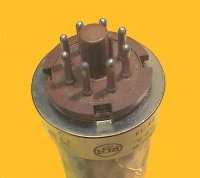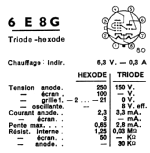
6E8MG
|
Varianten |
|||||||||||||||||||||||||||||||||||||||
|
Klicks: 5798 Antworten: 0
French radios from the 1930s to the 1950s
|
|
|
Jacob Roschy
13.Sep.14 |
1
Unlike as elsewhere the French radio industry was not concentrated to a few well-known big brands. There was more or less well-known brands such as Celard- Ergos, Coradel, Desmet, Ducretet- Thomson, Fornett, General, Hermes, Lafayette, Le Regional, LMT, Marquett, Minerva (branch of the Austrian Trademark), Ondia, Pathe, Philips, Radiola, Radiomuse, Ralsa, Reela, RTA, Schneider Freres, Socradel, Sonora, SNR, SREB, Unic, Vox and a some more. There were also many small and micro companies that manufactured radios. A large share of the French radio dealers has manufactured the radios they offered for sale in their own workshops. This was facilitated by a number of well established component manufacturers which delivered transformers, speakers, scales + tuning capacitors, wave-switch- units (tuners) and IF filters. Thus a French radio shop could easily assemble radio chassis with the components they purchased. They could even obtain the radio cases by a component manufacturer or could order it by a cabinet maker. Therefore no one should be surprised to find radios with the same type of scale, but otherwise completely different design. These workshop radios were almost always made by well established standard circuits, as they were recommended by the tube- or component manufacturers. The market share of these so called "fabrication artisanal" (workshop produced) radio sets is relatively high, apparently many French radio shops from smaller or larger cities has sold the radios they manufactured in their own shop. Many of these radio sets were offered completely anonymous, with no manufacturer name or logo, no rating plate and no technical information. The chances to find schematic diagrams or information about the manufacturer are usually close to zero. This enormous variety of manufacturers has led to an equally enormous variety of case styles, which is unknown elsewhere. You can find many different designs from quite simply to extravagant, with inlays, ornaments, with "ears" and with mirror scale.
Yet in the early days of radio, a number of French broadcast stations operated at closely spaced frequencies, thus suitable selective receivers were required.
110 V power line networks were very common until the 1950s in France. This allowed to offer cheap radios, which were exclusively designed for this voltage. If such a radio should be operated at 220 V line voltage, as it was the case in some areas in France, an additional series resistor was inserted between the radio plug and the line socket. This resistor consumed the same energy as the radio itself, thus the power consumption was doubled and could easily exceed 100 watts. In some of these radios this resistor was installed inside the case, which developed a sweltering heat, whereby a wooden cabinet could became carbonized above this resistor. |
Ende Forumsbeiträge zur Röhre
| Datenkonformität | Mehr Informationen |





